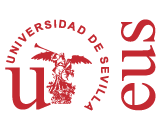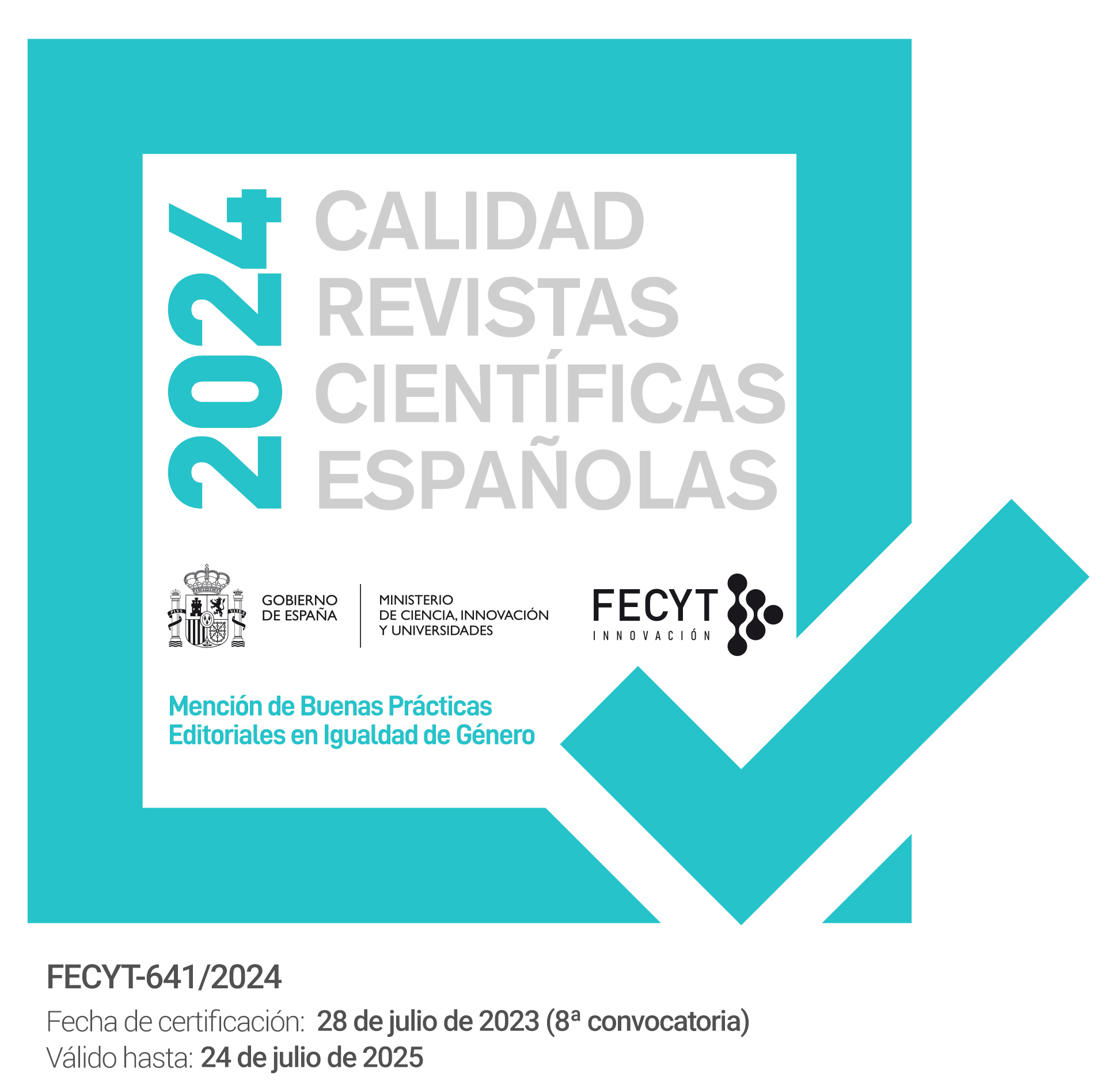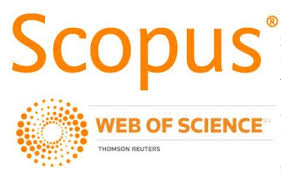Linguistic Landscape and Crematonymy: the Social Stratification
DOI:
https://doi.org/10.12795/PH.2024.v38.i01.02Keywords:
Linguistic Landscape, Socio-onomastics, crematonyms, linguistic stratificationAbstract
The aim of this paper is to study the presence and role played by crematonyms or trade names within the linguistic landscape of Salamanca. Using a sample stratified into three areas representing three socio-economic levels, we look at the functional and formal differences of these elements in each of them, as well as the overlapping trends in the whole environment. As well as being able to see the increasing incorporation of other languages in the LL, with a particular incidence of English, we see a gap in the behaviour of the lower stratum compared to the upper and middle levels, which offer more points of contact in commercial attributive practices, results that we believe can be extrapolated to other syntopic entities.
Downloads
Referencias bibliográficas
Ainiala, T. y Vuolteenaho, J. (2006). How to study urban onomastic landscape? Acta onomastica, 47, 58-63.
Akzhigitova, A. y Zharkynbekova, S. (2014). Language planning in Kazakhstan. The case of ergonyms as another scene of linguistic landscape of Astana. Language Problems and Language Planning, 38(1), 42-57. https://doi.org/10.1075/lplp.38.1.03akz
Bagna, C. y Machetti, S. (2012). LL and (Italian) menus and brand names: A survey around the world. En C. Hélot, M. Barni, R. Janssens y C. Bagna (Eds.), Linguistic Landscapes, Multilingualism and Social Change (pp. 217-230). Peter Lang.
Bajo Pérez, E. (2002). La caracterización morfosintáctica del nombre propio. Editorial Toxosoutos.
Ben-Rafael, E. (2009). A sociological approach to the study of linguistic landscapes. En E. Shohamy y D. Gorter (Eds.), Linguistic Landscape: Expanding the scenery (pp. 40-55). Routledge.
Blommaert, J. (2012). Chronicles of Complexity. Ethnography, Superdiversity and Linguistic Landscapes. Tilburg University. https://doi.org/10.21832/9781783090419
Blommaert, J. (2014). Infrastructures of superdiversity: Conviviality and language in an Antwerp neighborhood. European Journal of Cultural Studies, 17(4), 431-451. https://doi.org/10.1177/1367549413510421
Blommaert, J. y Dong, J. (2010). Language and Movement in Space. En N. Coupland (Ed.), The handbook of language and globalization (pp. 366-385). Wiley-Blackwell. https://doi.org/10.1002/9781444324068.ch16
Blommaert, J. y Maly, I. (2014). Ethnographic linguistic landscape analysis and social change: A case study (Tilburg Papers in Culture Studies 100). Tilburg University.
Boerrigter, R. y Nijboer, H. (Eds.). (2012). Names as Language and Capital. Proceedings Names in the Economy III. Amsterdam, 11-13 June 2009. http://www.meertens.knaw.nl/nite/
Caravedo, R. (2007). El espacio en la lingüística de la variación. Archivo de Filología Aragonesa, 59-60(2), 1119-1129.
Cenoz, J. y Gorter, D. (2006). The Linguistic Landscape and Minority Languages. International Journal of Multilingualism, 3(1), 67-80. https://doi.org/10.1080/14790710608668386
Organización mundial de la propiedad intelectual. (2012). Clasificación Internacional de Productos y Servicios para el registro de las marcas (Clasificación de Niza).
Chiang, S.-Y. (2009). Interformative meaning of signs: Brand naming and globalization in China. Social Semiotics, 19(3), 329-344. https://doi.org/10.1080/10350330903072680
Crystal, D. (1997). English as a Global Language. Cambridge University Press.
Danesi, M. (2011). What’s in a Brand Name? A Note on the Onomastics of Brand Naming. Names. A Journal of Onomastics, 59(3), 175-185. https://doi.org/10.1179/002777311X13082331190119
Edelman, L. (2009). What’s in a name? Classification of Proper names by language. En E. Shohamy y D. Gorter (Eds.), Linguistic Landscape: Expanding the scenery (pp. 141-154). Routledge.
Edelman, L. y Gorter, D. (2010). Linguistic Landscapes and the Market. En H. Kelly-Holmes y G. Mautner (Eds.), Language and the Market (pp. 96-108). Palgrave Macmillan. https://doi.org/10.1007/978-0-230-29692-3_9
Egorova, E. y Tihonova, K. A. (2017). The function of urbanonyms in language and cultural space of the city (in terms of the analysis of urbanonyms of Arkhangelsk). Arctic and North, 26, 12-20. https://doi.org/10.17238/issn2221-2698.2017.26.14
El-Yasin, M. K. y Mahadin, R. S. (1996). On the pragmatics of shop signs in Jordan. Journal of Pragmatics, 26(3), 407-416. https://doi.org/10.1016/0378-2166(95)00017-8
Fernández Juncal, C. (2020a). La estratificación social del paisaje lingüístico de Bilbao. Revista Internacional de Lingüística Iberoamericana, (35), 117-141. https://doi.org/10.31819/rili-2020-183509
Fernández Juncal, C. (2020b). Entre crematónimos y topónimos. Los nombres de comercios. Boletín de Filología (Santiago), 55(2), 345-367. https://doi.org/10.4067/S0718-93032020000200345
Friedrich, P. (2002). English in advertising and brand naming: Sociolinguistic considerations and the case of Brazil. English Today, 18(3), 21-28. https://doi.org/10.1017/S0266078402003048
García Marcos, F. (2019). El lenguaje de las rotulaciones de establecimientos comerciales en las ciudades contemporáneas. Los casos de Almería, Łódź y Tarrasa. Signa: Revista de la Asociación Española de Semiótica, (28), 699-732. https://doi.org/10.5944/signa.vol28.2019.25075
González del Río, J., Ampuero Canellas, O., Jordá Albiñana, B. y Magal Royo, T. (2011). El nombre de marca: Interrelación de factores lingüísticos y corporativos. Revista de Lingüística y Lenguas Aplicadas, 6, 181-193. https://doi.org/10.4995/rlyla.2011.902
Gorter, D. (Ed.). (2006). Linguistic Landscape: A New Approach to Multilingualism. Multilingual Matters. https://doi.org/10.21832/9781853599170
Grandinetti, R. (2008). Il rapporto tra produzione e consumo in una prospettiva storica. En R. Grandinetti (Ed.), Marketing. Mercati, prodotti e relazioni (pp. 23-42). Carocci Editore.
Haarmann, H. (1986). Verbal strategies in Japanese fashion magazines. A study in impersonal bilingualism and ethnosymbolism. International Journal of the Sociology of Language, (58), 107-121. https://doi.org/10.1515/ijsl.1986.58.107
Hakala, U., Paula, S. y Kantola, S.-P. (2015). Toponyms as carriers of heritage: Implications for place branding. Journal of Product & Brand, 24(3), 263-275.
Instituto Nacional de Estadística. (s. f.). Atlas de distribución de renta de los hogares. https://www.ine.es/experimental/experimental.htm
Instituto Nacional de Estadística. (2020). Demografía y población. https://www.ine.es/dyngs/INEbase/es/categoria.htm?c=Estadistica_P&cid=1254734710984
Junta de Castilla y León. (2023). Datos del turismo en Castilla y León. https://analisis.datosabiertos.jcyl.es/pages/turismo/?flg=es
Labov, W. (1966). The Social Stratification of English in New York City. Center for Applied Linguistics.
Lanza, E. y Woldemariam, H. (2014). Indexing modernity: English and branding in the linguistic landscape of Addis Ababa. The International Journal of Bilingualism, 18(5), 491-506. https://doi.org/10.1177/1367006913484204
Leibring, K. (2012). From Backmans Blommor to Hairstyle by Lena: The Use of Personal Names in the Names of Small Companies in Sweden. En R. Boerrigter y H. Nijboer (Eds.), Names as Language and Capital. Proceedings Names in the Economy III. Amsterdam, 11-13 June 2009 (pp. 48-57). http://www.meertens.knaw.nl/nite/
Líbano Zumalacárregui, M. A. (1993). Toponimia menor: onomástica comercial. Fontes Linguae Vasconum: Studia et documenta, 25(62), 125-136. https://dialnet.unirioja.es/descarga/articulo/26122.pdf
Moutinho, L. y Coimbra, R. (1998). O nome é a alma do negócio: Um estudo Lingüístico dos nomes das Lojas em Portugal. En Actas do XIII Encontro da Associação Portuguesa de lingüística (Vol. 2, pp. 93-104). Colibri.
Papen, U. (2012). Commercial discourses, gentrification and citizens’ protest: The linguistic landscape of Prenzlauer Berg, Berlin. Journal of Sociolinguistics, 16(1), 56-80. https://doi.org/10.1111/j.1467-9841.2011.00518.x
Pennycook, A. (2003). Global Englishes, Rip Slyme, and performativity. Journal of Sociolinguistics, 7(4), 513-533. https://doi.org/10.1111/j.1467-9841.2003.00240.x
Piller, I. (2003). Advertising as a Site of Language Contact. Annual Review of Applied Linguistics, 23, 170-183. https://doi.org/10.1017/S0267190503000254
Pinillos Laffón, A., Olivares Delgado, F. y Rodríguez Valero, D. (2016). El nombre de la marca corporativa. Una taxonomía de los nombres de empresa familiar en España. Revista Latina de Comunicación Social, (71), 750-774. https://doi.org/10.4185/RLCS-2016-1119
Real Academia Española y Asociación de Academias de la Lengua Española. (2009). Nueva gramática de la lengua española. Espasa.
Real Academia Española y Asociación de Academias de la Lengua Española. (2010). Ortografía de la lengua española. Espasa.
Relph, E. (1976). Place and Placelessness. Pion.
Seide, M. S. y Lucas, P. (2018). Os topônimos comerciais da cidade de Naranjal, Paraguai. Confluência, (54), 164-195. https://doi.org/10.18364/rc.v1i54.238
Shohamy, E. y Gorter, D. (Eds.). (2009). Linguistic landscape. Expanding the scenery. Routledge. https://doi.org/10.4324/9780203930960
Sjöblom, P. (2013). Lumia by Nokia, iPhone by Apple: Global or Local Features in Commercial Names? En P. Sjöblom, T. Ainiala y U. Hakala (Eds.), Names in the Economy: Cultural Prospects (pp. 2-14). Cambridge Scholars.
Soler-Carbonell, J. (2016). Complexity Perspectives on Linguistic Landscapes: A Scalar Analysis. Linguistic Landscape, 2(1), 1-25. https://doi.org/10.1075/ll.2.1.01sol
Teutsch, A. (2012). Speakability of Trademarks. En R. Boerrigter y H. Nijboer (Eds.), Names as Language and Capital. Proceedings Names in the Economy III. Amsterdam, 11-13 June 2009 (pp. 82-92). http://www.meertens.knaw.nl/nite/
Tufi, S. y Blackwood, R. (2010). Trademarks in the linguistic landscape: Methodological and theoretical challenges in qualifying brand names in the public space. International Journal of Multilingualism, 7(3), 197-210. https://doi.org/10.1080/14790710903568417
Vandenbroucke, M. (2014). Language visibility, functionality and meaning across various TimeSpace scales in Brussels’ multilingual landscapes. Journal of Multilingual and Multicultural Development, 36(2), 163-181. https://doi.org/10.1080/01434632.2014.909442
Vandenbroucke, M. (2016). Socio-economic stratification of English in globalized landscapes: A market-oriented perspective. Journal of Sociolinguistics, 20(1), 86-108. https://doi.org/10.1111/josl.12166
Walkowiak, J. B. (2013). Foreign branding in Poland: Chrematonyms and anthroponyms. En O. Felecan (Ed.), Proceedings of ICONN 2 (pp. 218-227). Mega y Argonaut.
Wolfram, W. (1969). A Sociolinguistic Description of Detroit Negro Speech. Center for Applied Linguistics.
Published
How to Cite
Issue
Section
License
Copyright (c) 2024 Carmen Fernández Juncal

This work is licensed under a Creative Commons Attribution-NoDerivatives 4.0 International License.
The printed and electronic editions of this Journal are edited by the University of Seville Editorial, and the source must be cited in any partial or total reproduction.
Unless otherwise indicated, all the contents of the electronic edition are distributed under a license of use and distribution “Attribution-NonCommercial-NoDerivatives 4.0 International” . You can view the informative version and the legal text of the license here. This fact must be expressly stated in this way when necessary.
Authors who publish in this journal accept the following conditions:
- The author/s retain copyright and grant the journal the first publication right, and accept it to be distributed with the Creative Commons By NC ND 4.0 licence, which allows third parties to use what is published whenever they mention the authorship of the work and the first publication in this journal and whenever they do not make commercial use and reuse it in the same way.
- Authors can make other independent and additional contractual agreements for the non-exclusive distribution of the article published in this journal (e.g., include it in an institutional repository or publish it in a book) provided they clearly indicate that the work was published for the first time in this journal.
Authors are allowed and recommended, once the article has been published in the journal Philologia Hispalensis (online version), to download the corresponding PDF and disseminate it online (ResearchGate, Academia.edu, etc.) as it may lead to productive scientific exchanges and to a greater and faster dissemination of published work (see The Effect of Open Access).
Accepted 2023-05-15
Published 2024-06-05
- Abstract 313
- PDF (Español (España)) 167
- HTML (Español (España)) 78
- XML (Español (España)) 20









